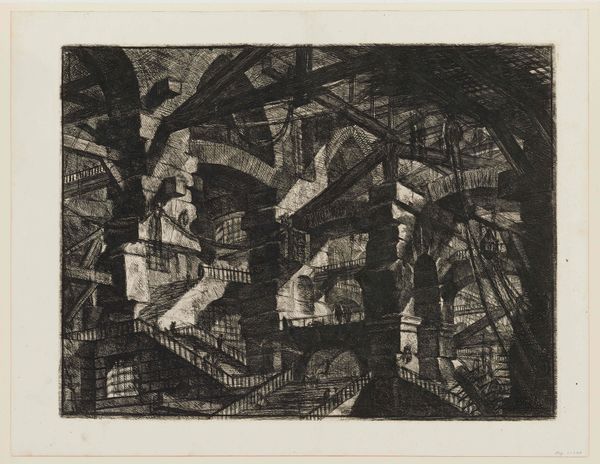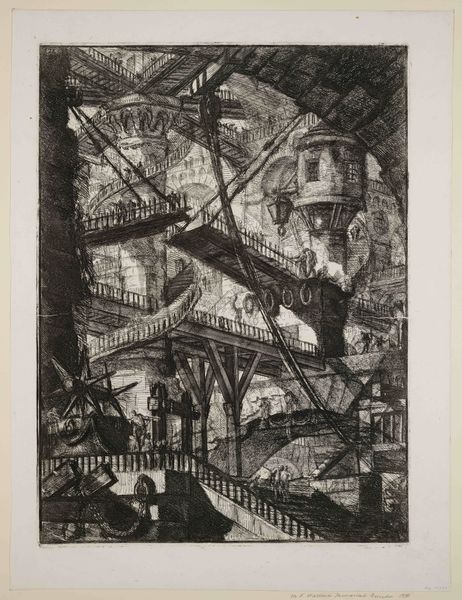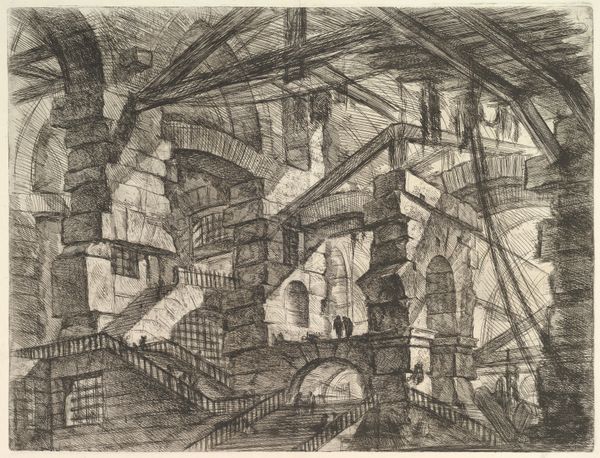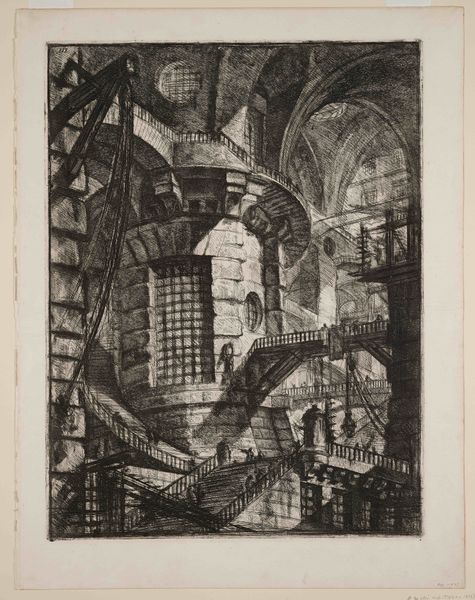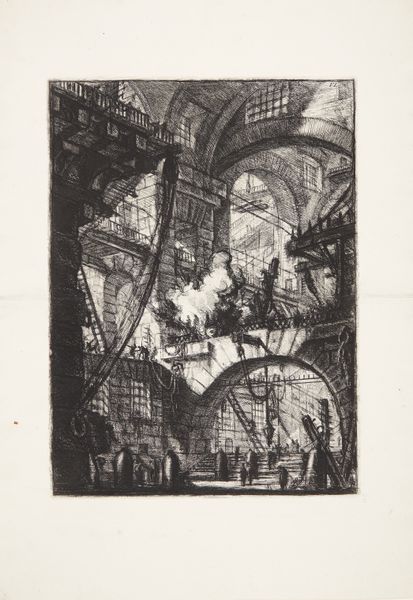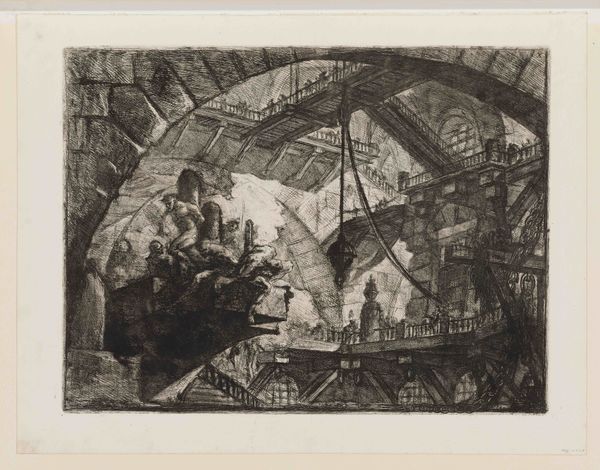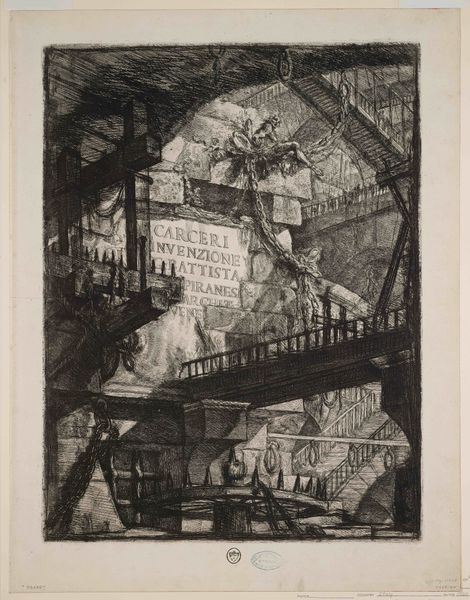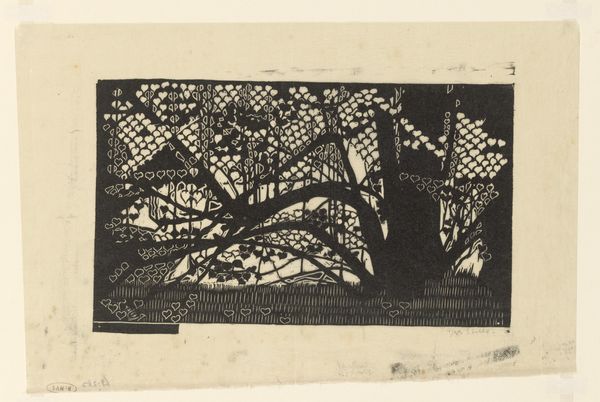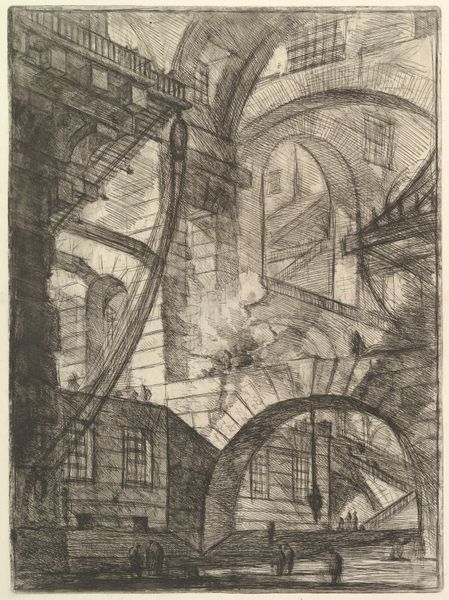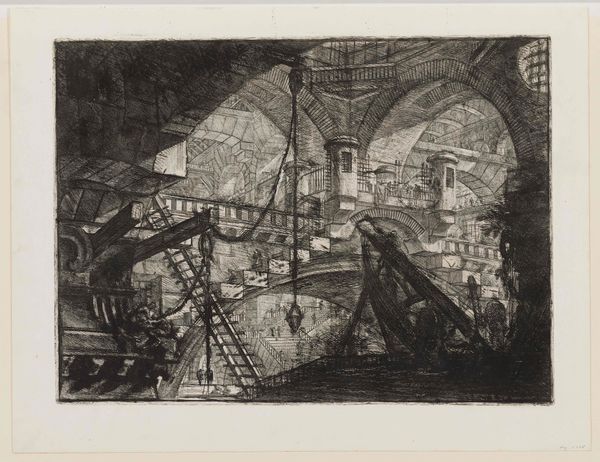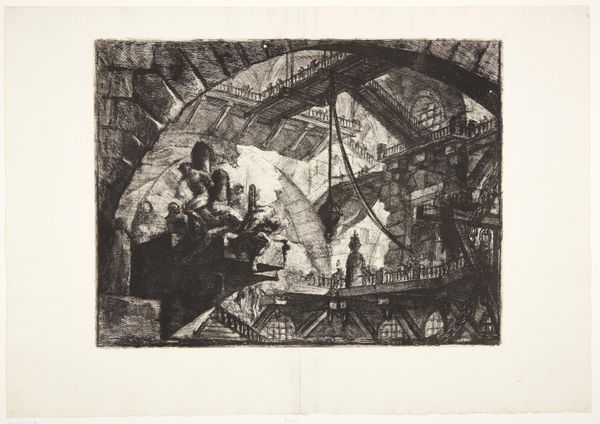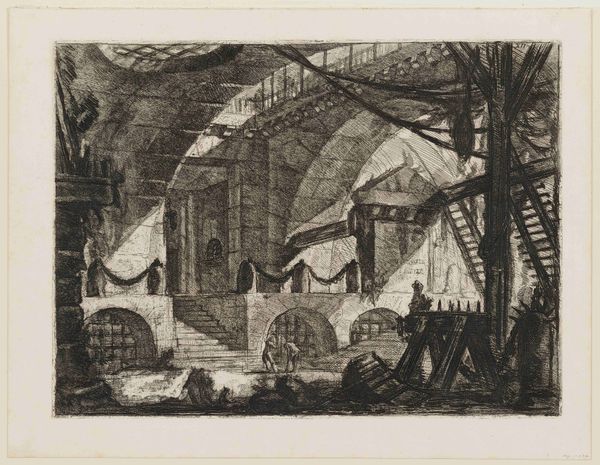
print, etching, engraving
#
baroque
# print
#
etching
#
perspective
#
form
#
line
#
cityscape
#
history-painting
#
engraving
Dimensions: 16 1/4 x 21 5/8 in. (41.28 x 54.93 cm) (plate)20 1/2 x 29 5/8 in. (52.07 x 75.25 cm) (sheet)
Copyright: Public Domain
Curator: Piranesi’s “The Gothic Arch,” created around 1749, pulls us into a dizzying architectural fantasy realized through etching and engraving. What strikes you immediately about this print? Editor: An oppressive grandeur. The density of the line work—all those cross-hatchings—gives the scene a claustrophobic feel, even as the archways promise some kind of limitless space. Curator: That feeling of oppression may stem from the era in which Piranesi worked. His "imaginary prisons" reflected anxieties of his time but also critiqued the abuses of power within institutions. It is not enough to admire skillful technique without questioning what political power it holds. Editor: But look at the dynamism achieved simply through the variation in line thickness and direction. The formal composition is the message itself: it communicates Baroque drama. The structural integrity of the image holds; the way he manipulates the eye, the use of light and dark that is the content. Curator: Precisely, but remember that in eighteenth-century Europe, Rome's power was rooted in architecture, so the ruins held profound political weight. He's tapping into a collective fascination with history, and that also ties to colonial aspirations, of architectural conquest. Editor: Fair enough. Yet, his precise architectural details juxtaposed with the ambiguity of the scene—the M.C. Escher-like quality, creates its unique aesthetic power. Regardless of whatever colonial narrative may have shaped its making, “The Gothic Arch” shows the magic of structure itself, no? Curator: I find it essential to unpack the historical context of architectural fantasies like this. By viewing art with consideration of its social framework, the museum serves a stronger purpose in promoting both knowledge and ethical social values. Editor: And by immersing in aesthetic details like tonality and implied depth and shadow—details Piranesi undoubtedly intended to evoke certain visual and even visceral feelings in the viewer—we heighten our aesthetic understanding of architectural structures. A satisfying dialectic indeed!
Comments
No comments
Be the first to comment and join the conversation on the ultimate creative platform.
